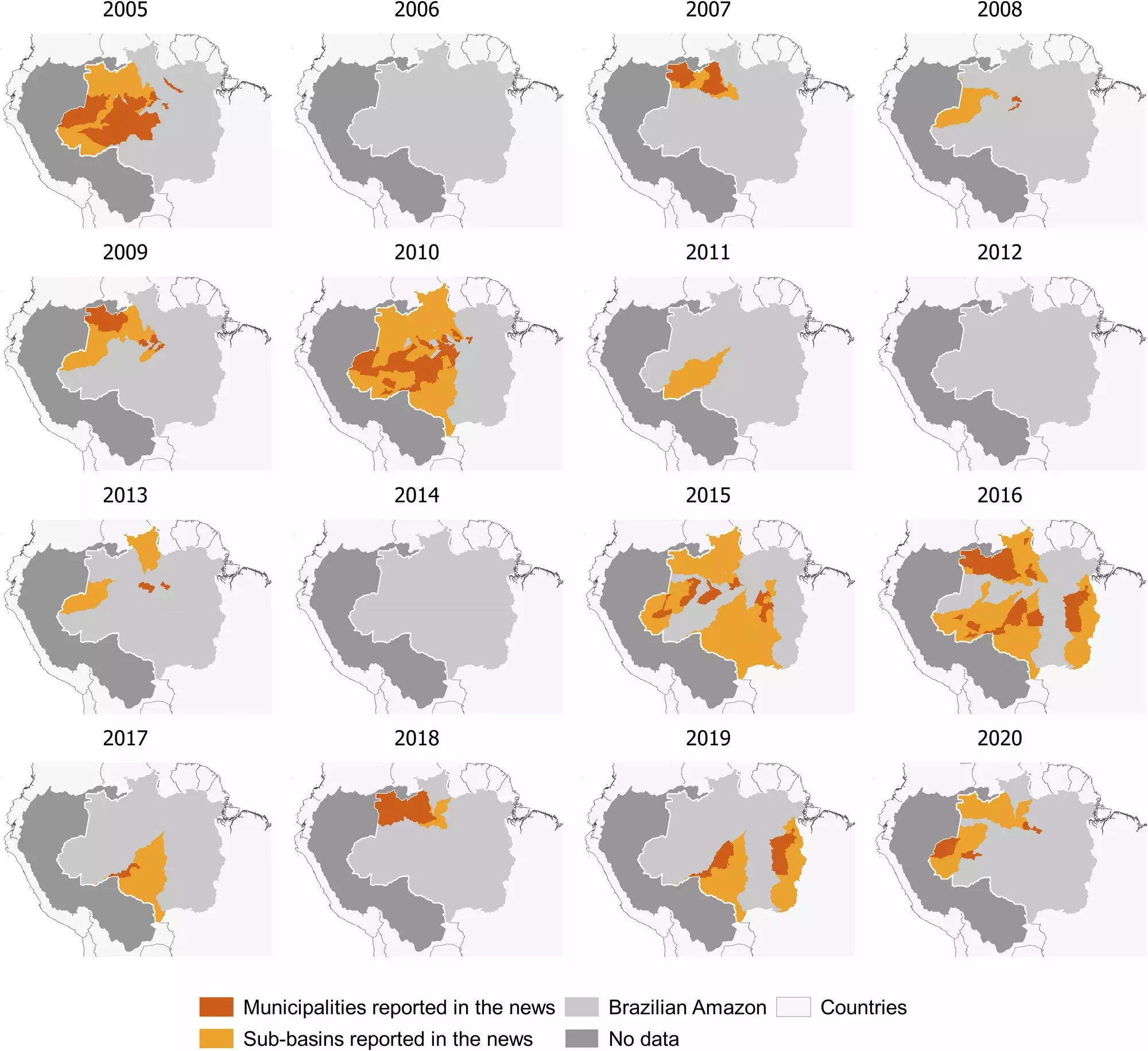Over the last twenty years, the Amazon basin has become a vivid illustration of climate change’s toll on both nature and humanity. The once-mighty rivers that meander through this ecological treasure have started to dwindle under the unprecedented stress of severe droughts. A groundbreaking study from the Institute of Environmental Science and Technology at the Universitat Autònoma de Barcelona has meticulously documented how these shifts are not just abstract environmental issues but are profoundly impacting the lives of local communities. The research, spearheaded by Letícia Santos de Lima and backed by a consortium of Brazilian and American researchers, reveals an urgent crisis that necessitates immediate attention.
What possesses real gravitas in this study is the finding that severe droughts have prolonged periods of low water. These low water levels now persist up to a month longer than the historical norm. For the residents of the Amazon, this translates to more than just dry land; it raises existential questions of access and survival. In a region where many families rely on waterways for their very livelihood, such conditions threaten the very fabric of society. The alarming statistic that nearly half of non-Indigenous localities and more than half of Indigenous villages face potential isolation underscores the critical nature of this environmental threat.
Drought and Its Ripple Effects
The research lays bare the complexity of the issue by revealing how droughts extend their harmful effects through various channels. For instance, navigability becomes severely compromised, making it impossible for local populations to transport goods, access essential services, or even seek medical attention. The sacred rivers that once sustained their way of life have turned into obstacles, amplifying their struggle. Gone are the days when families could effortlessly navigate their boats to fetch supplies or visit neighboring communities. The current crisis means prolonged periods of food scarcity, hampered access to healthcare, and limited educational opportunities for children.
Letícia Santos de Lima’s pointed assertion that “this is the new reality of the Amazon” encapsulates the grim outlook. Drought has transformed into a multidimensional crisis, where economic, social, and health-related repercussions are inextricably linked. In light of these stark realities, the call for robust policy measures becomes even more pronounced. The authors emphasize that a reactive approach to crisis management is no longer sufficient. Policies must pivot towards long-term adaptation strategies that factor in the inevitability of climate variability.
The Role of Infrastructure in the Crisis
Interestingly, the study touches upon the controversial role of infrastructure development, specifically road building. While the knee-jerk reaction to rural isolation often revolves around creating more roads, the reality is far more nuanced. These infrastructural solutions, ironically, exacerbate the very problems they aim to solve. Roads have historically been catalysts for deforestation, disrupting the delicate hydrological balance of the Amazon. The result? Increased sedimentation in rivers that further diminishes navigability during droughts. Thus, addressing the transportation challenges faced by isolated communities necessitates an innovative approach that respects and protects the unique ecology of the Amazon.
Additionally, the analysis underscores that simply building more infrastructure without considering environmental impacts is a recipe for disaster. The researchers advocate for sustainable practices that empower communities without damaging their habitat. The solution lies in harnessing local knowledge and adaptive technologies that preserve the waterways while addressing the pressing transportation needs of Amazonian residents.
The Urgent Need for Policy Change
The conclusions drawn from this study beg the question: How will policymakers respond to these stark realities? The overdue need for climate-focused policies that integrate social and environmental frameworks hangs like a cloud over the Amazon basin. Without substantial commitment from governments—locally and globally—communities will continue to face the compounded burden of droughts, isolation, and declining resources.
In essence, this research isn’t just an academic endeavor; it’s a clarion call for action that resonates far beyond the confines of science. As Letícia Santos de Lima emphasizes, our response must be rooted in proactive planning, innovative solutions, and a genuine commitment to the people who call the Amazon home. The time to act is now, not just for the ecology of the Amazon, but for the integrity and well-being of millions who depend on its lifeblood.

